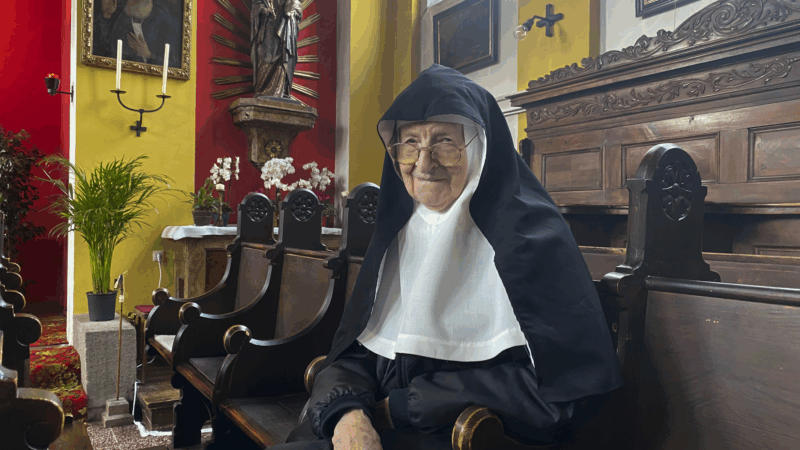5 simple (and cheap) things to make your house use less energy
Climate change shapes where and how we live. That’s why NPR is dedicating a week to stories about solutions for building and living on a hotter planet.
Our homes use a lot of energy. The huge amounts of energy used to operate buildings result in more than a fourth of the world’s planet heating carbon dioxide pollution.
One home climate solution is to switch to appliances that make less pollution, like switching from a gas furnace to an efficient heat pump.
But it turns out you don’t have to buy a new appliance to cool or heat your home in a more climate-friendly way. Climate solutions for reducing home energy use can be extremely simple — and sometimes even free, says Dorit Aviv, assistant professor of architecture at the University of Pennsylvania.
A more energy-efficient home often comes down to gaining less heat in hot months and losing less heat in cold months, Aviv says. Here are five simple solutions to reduce your home’s climate pollution, make your home more resilient to global warming and reduce your energy bills.
Open a window

Aviv says we’re so used to thinking about thermostats or turning on the air conditioning as the main way to control our home’s temperature. But many of us live in temperate environments, at least for part of the year.
In the spring or in the evenings, instead of turning on the air conditioner — which not only uses electricity but releases potent planet-heating gases called hydrofluorocarbons — Aviv has another idea.
“A lot of the time,” she says, “all you need to do is to actually open your windows to be comfortable.”
Even better, Aviv says? Open up two windows to create a cross breeze if you have cross-facing windows in your home. Researchers find that using natural ventilation can translate into huge energy savings — sometimes as much as 45% depending on your local climate.
Don’t forget ceiling fans

Aviv thinks not enough people use ceiling fans. “ I think that a lot of people can install ceiling fans and don’t even think about it anymore in the age of air conditioning,” Aviv says. “A lot of the time, you don’t need air conditioning if you have a ceiling fan.”
While ceiling fans cannot lower the air temperature, they can provide increased cooling by moving the air around, which may be enough in certain climates.
Fans use a lot less energy than air conditioning. Using ceiling fans compared to air conditioners can reduce energy use and greenhouse gas emissions by 76%, according to researchers in Australia.
If you have a ceiling fan and aren’t using it, try turning it on. Bonus points if you also can open a few windows.
Make your roof reflective

The roof is often the part of your home that receives the most sun. That sunlight hitting the roof gets absorbed in the building and translates to heat inside the house.
That’s why Aviv says it might be worth looking into what’s known as a “reflective roof.”
“Reflective roofs are actually one of the easiest retrofits you can do in a house,” she says.
A lot of roofs are covered with black or darker-color finishes, which absorb the sun’s heat. With a roof coated with a white or a silvery color, the solar energy gets reflected away from the house instead of absorbed inside.
That way, Aviv says, “you are alleviating a lot of the cooling load that your house needs.”
Less need for cooling with air conditioners also means less money spent on utility bills. Aviv suggests talking to a roofer who knows about different reflective paints that can help reflect sunlight.
Put your shades outside, not inside

In places that get very hot, you might want to think about installing shades on the outside of your house, not the inside, says Daniel Barber, professor of architectural theory at Eindhoven University of Technology in the Netherlands.
Here’s why. If you have a blind or curtain inside your house, behind your windowpane, then the sunlight coming in brings the heat inside.
If you close the blind or curtain, Barber says, “You’re basically creating a sort of a buffer, a sort of pillow of heat between the curtain and the window.”
That’s why climate-minded designers are installing blinds or shades on the outside of apartments and homes, not on the inside. That way the heat stays outside your house.
Keeping the heat out using shades is a tradition dating back centuries, Barber says. In Mediterranean places like Egypt, Tunisia or Southern Europe, people use wooden shutters to keep the heat on the exterior of a building, and not bring it inside.
Seal it up

It’s a basic law of physics — thermodynamics, to be precise. ”Heat always finds a way to escape through the easiest path,” Aviv says.
That’s why in cool months when you’re heating your home, you want to make sure that heat isn’t escaping your house into the outdoors. Or in hot months, if you have an air-conditioning system that brings in fresh air, you want to make sure heat is not entering your home through the cracks.
Aviv says to look for “air leaks” that usually occur in cracks around openings like windows and doors.
Nancy “Nan” Ma, assistant professor of architectural engineering at Worcester Polytechnic Institute in Massachusetts, explains that one solution is to upgrade your windows. But for something cheaper, you can do something called “weather stripping.” That’s using a type of tape or rubber around your window frame to seal the leaks. Weather-stripping materials often cost under $10, and you can buy them at the hardware store or online.
This story was edited by Neela Banerjee. The visual editor is Beck Harlan. We’d love to hear from you. Leave us a voicemail at 202-216-9823, or email us at [email protected].
Listen to Life Kit on Apple Podcasts and Spotify, and sign up for our newsletter. Follow us on Instagram: @nprlifekit.
Lucy Liu on ‘Rosemead,’ rejection and returning to Mandarin
The child of Chinese immigrants, Liu didn't learn English until she was 5. She plays a terminally ill woman grappling with her teenage son's mental health crisis in Rosemead.
Mariah Carey’s ‘All I Want for Christmas Is You’ breaks an all-time chart record
With Carey's enduring Christmas hit, we may be looking at a record that borders on the untouchable.
Austrian nuns await word from the Vatican on whether they can stay in their convent
The three octogenarian nuns broke out of a nursing home to go back to live in their convent, sparking a dispute with their church superior. Both sides have appealed to the Vatican for a resolution.
From toddlers to teens, here’s your one-stop shop for young readers
If you have kids in your life who are ready to broaden their book horizons we have recommendations for you! Here you'll find tried-and-true picture books, chapter books, and YA, all published in 2025.
Inflation cools slightly in November as worries about affordability grip Americans
The cost of living in November was up 2.7% from a year ago, according to a report Thursday from the Labor Department. That's a smaller annual increase than for the 12 months ending in September.
New York has a new Archbishop. His background looks a lot like Pope Leo’s
Like Pope Leo, Bishop Ronald Hicks is an Illinois native with deep experience in Latin America.








